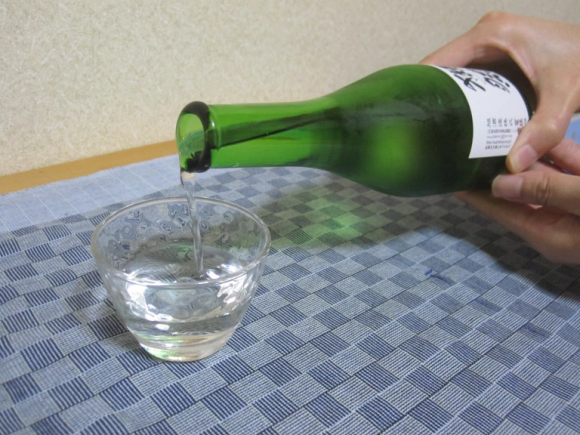
Here’s a great way to start wading into the deep waters of the sake world.
Sake is sometimes referred to as “Japanese rice wine,” which is a bit of a contentious description, since sake is actually brewed, making it arguably closer to beer than wine. However, just like wine made from grapes, sake (or nihonshu, as it’s more commonly called in Japan) from different regions can taste very different, due to differences in the characteristics of the rice and water used in the production process, as well as local flavor preferences.
So if you’re a nihonshu neophyte looking at the sake options in a restaurant or liquor store, or even a veteran who just doesn’t recognize any of the specific brews, a simple way to narrow down your selection is by knowing which region of Japan makes sake that suits your tastes. To help with that, nihonshu information app Sake no Wa has compiled the impressions of its users for sake varieties from all over the country, then sorted the data by region and made different charts for the prefectures of Japan.
▼ Charts for Akita, Yamagata, and Fukushima Prefectures on top row, Chiba, Tokyo, and Kanagawa on bottom
Each chart contains ratings in six categories:
● hanayaka/華やか (top center point): complexity and impact
● hojun/芳醇 (upper right): mellowness
● juko/重厚 (lower right): depth of flavor
● odayaka/穏やか (bottom center): smoothness
● dorai/ドライ (lower left): dryness
● keikai/軽快 (upper left): lightness
Starting at the country’s northern tip and moving down, let’s begin with Hokkaido and the Tohoku region.
▼ Left to right, and top to bottom: Hokkaido, Aomori, Iwate, Miyagi, Akita, Yamagata, and Fukushima
Moving on to Kanto (which includes Tokyo), the data shows a number of light brews.
▼ Tokyo, Kanagawa, Saitama, Chiba, Ibaraki, Tochigi, and Gunma
Niigata, found in the central Chubu region, is commonly held to produce some of Japan’s finest nihonshu.
▼ Niigata, Toyama, Ishikawa, Fukui, Yamanashi, Nagano
▼ Gifu, Shizuoka, and Aichi
In Kansai, the greatest sake glory traditionally goes to the examples made in Kyoto’s Fushimi district.
▼ Mie, Shiga, Kyoto, Osaka, Hyogo, Nara, and Wakayama
The Western Chugoku region can count Hiroshima’s Kamotsuru (enjoyed by former U.S. President Barack Obama) and Yamaguchi’s “please-don’t pay-so-much-for-it” Dassai among its sake representitives.
▼ Tottori, Shimane, Okayama, Hiroshima, and Yamaguchi
Thirsty after a long day of pedaling to/from the island of Shikoku on the Shimanami Kaido cycling road? Check here before making your pick.
▼ Tokushima, Kagawa, Ehime, and Kochi
And finally, we come to the southwestern island of Kyushu, which is actually better known for shochu, but still has its share of nihonshu makers.
▼ Fukuoka, Saga, Nagasaki, Kumamoto, and Oita
People with a love of not just sake but geography too may notice that three prefectures, Miyazaki, Kagoshima, and Okinawa, aren’t accounted for. That’s because Sake no Wa doesn’t have sufficient user data to make charts for them yet. They’ll be added in due time, though, and in the meantime, if you still can’t make up your mind about which sake to drink, you can always go by which has the most handsome anime boy version.
Related: Sake no Wa
Source: PR Times
Top image ©SoraNews24
Insert images: PR Times
[ Read in Japanese ]

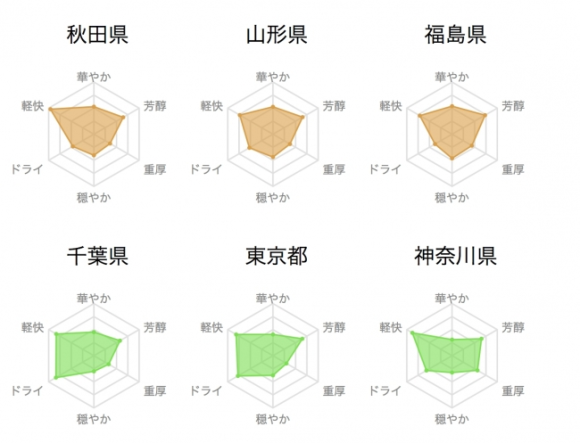
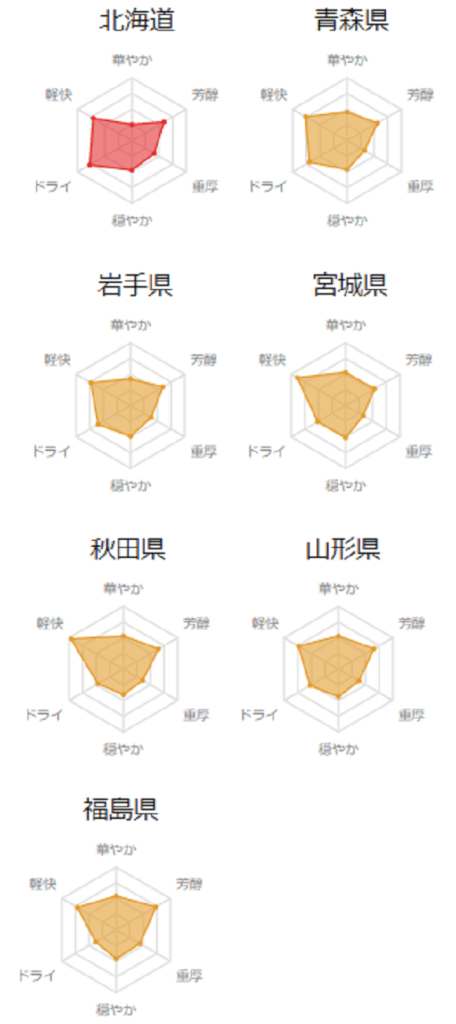

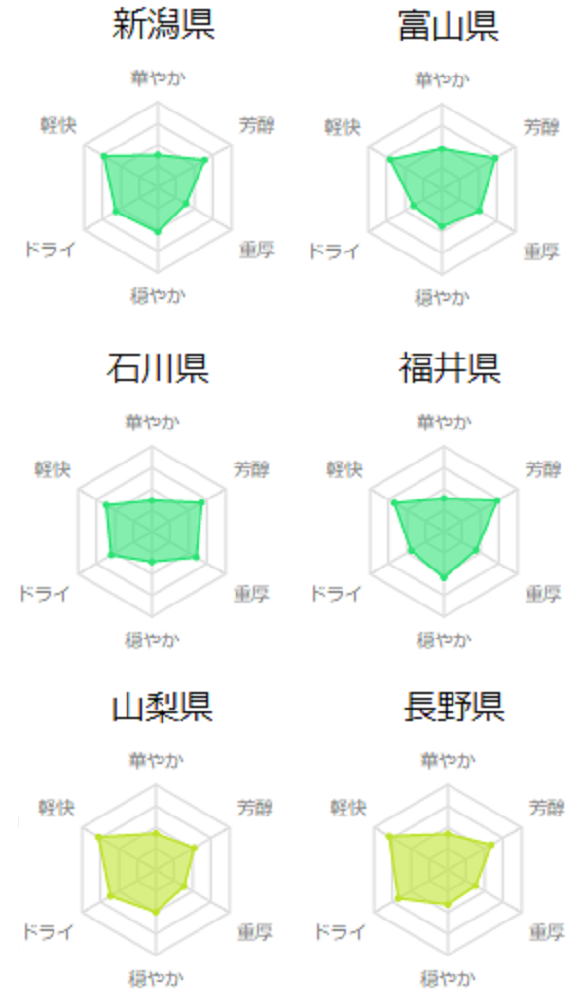

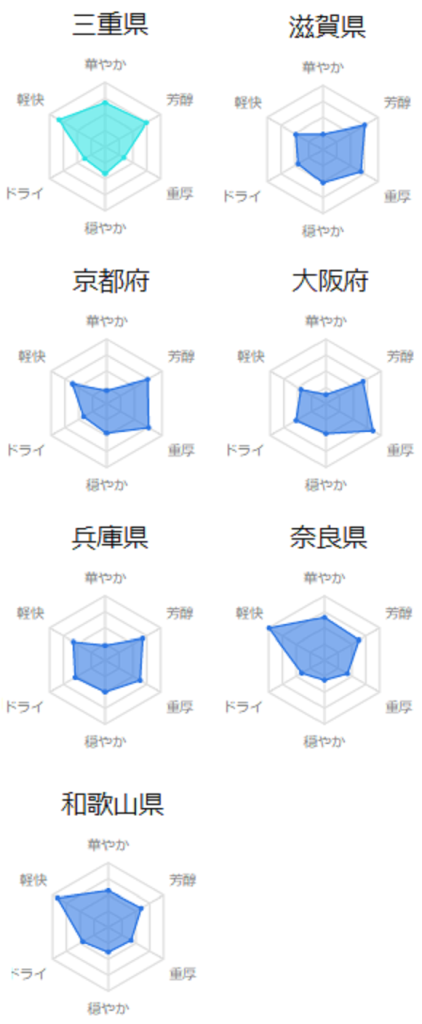
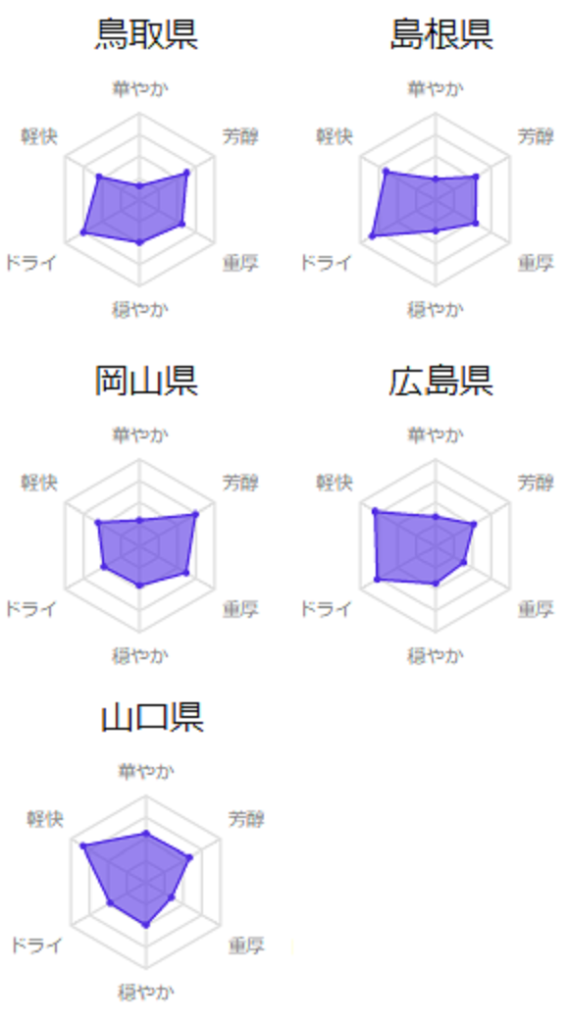
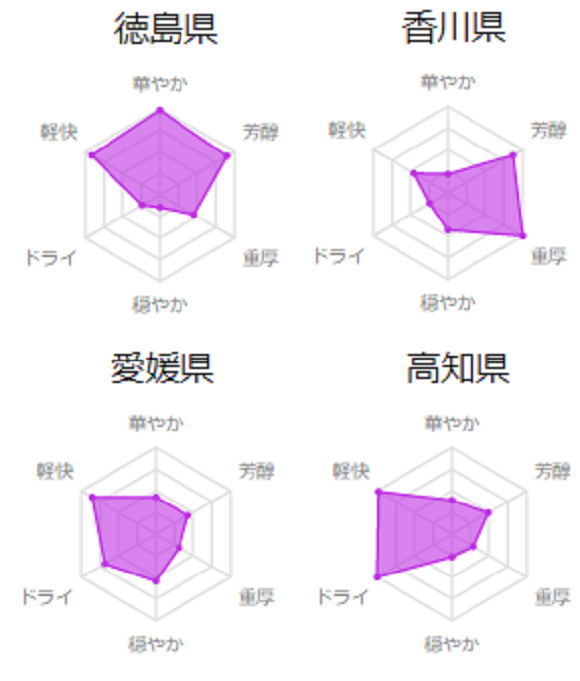
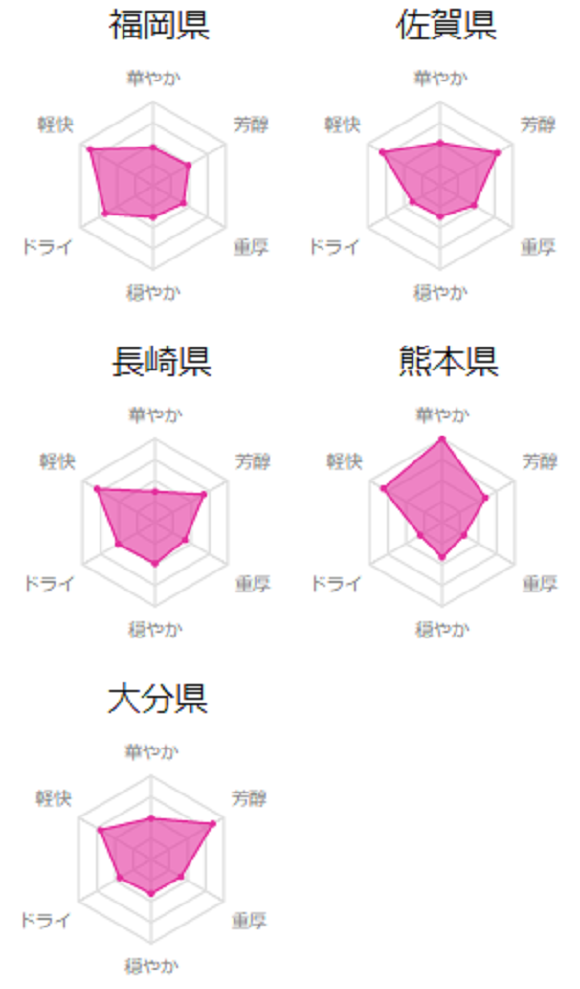
 Sake on ice! Akita sake brewery has special brewing process that is spinning up tons of interest
Sake on ice! Akita sake brewery has special brewing process that is spinning up tons of interest Alcoholic sake butter appears in Japan
Alcoholic sake butter appears in Japan Dirt cheap all-you-can-drink sake sampler in Tokyo saves us money plus a trip to Akita
Dirt cheap all-you-can-drink sake sampler in Tokyo saves us money plus a trip to Akita Pac-Man sake series coming to salute the video game star’s 40th birthday
Pac-Man sake series coming to salute the video game star’s 40th birthday Muji is selling sake, and it’ll make drinkers feel good in more ways than one
Muji is selling sake, and it’ll make drinkers feel good in more ways than one Japanese beef bowl chain Sukiya’s 2026 Smile Box lucky bag basically pays for itself
Japanese beef bowl chain Sukiya’s 2026 Smile Box lucky bag basically pays for itself Village Vanguard’s most expensive Black Lucky Bag sets an ominous tone for 2026
Village Vanguard’s most expensive Black Lucky Bag sets an ominous tone for 2026 The best Starbucks Japan Frappuccinos we want to drink again in 2026
The best Starbucks Japan Frappuccinos we want to drink again in 2026 Starbucks Japan ready to get Year of the Horse started with adorable drinkware and plushies【Pics】
Starbucks Japan ready to get Year of the Horse started with adorable drinkware and plushies【Pics】 Japanese thug wear from Birth Japan perfect for those breaking bad next year
Japanese thug wear from Birth Japan perfect for those breaking bad next year Sega’s Like a Dragon yakuza teaches “useless” English, let’s use it to learn some useful Japanese
Sega’s Like a Dragon yakuza teaches “useless” English, let’s use it to learn some useful Japanese Anime sword fighting isn’t like reality. Why? Biomechanics (again)
Anime sword fighting isn’t like reality. Why? Biomechanics (again)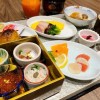 Ginza hotel serves up one of the best breakfasts in Tokyo
Ginza hotel serves up one of the best breakfasts in Tokyo Tokyo Station staff share their top 10 favorite ekiben
Tokyo Station staff share their top 10 favorite ekiben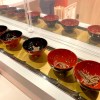 Japan’s first-ever wanko soba conveyor belt restaurant opens in Tokyo
Japan’s first-ever wanko soba conveyor belt restaurant opens in Tokyo Hayao Miyazaki says Happy New Year to Studio Ghibli fans with new art for Year of the Horse
Hayao Miyazaki says Happy New Year to Studio Ghibli fans with new art for Year of the Horse 7 great places to see Mt. Fuji from without having to climb it
7 great places to see Mt. Fuji from without having to climb it We found possibly the quietest Japanese-style hotel in Tokyo’s bustling Shinjuku district
We found possibly the quietest Japanese-style hotel in Tokyo’s bustling Shinjuku district Cup Noodle tries an authentic Jiro-style ramen, but something’s not quite right
Cup Noodle tries an authentic Jiro-style ramen, but something’s not quite right Hello Kitty Choco Egg figures are an adorable trip through three periods of Japanese pop culture【Pics】
Hello Kitty Choco Egg figures are an adorable trip through three periods of Japanese pop culture【Pics】 Japan’s oldest largetooth sawfish in captivity back on display in Mie Prefecture
Japan’s oldest largetooth sawfish in captivity back on display in Mie Prefecture Cyberpunk anime meets traditional culture in Ghost in the Shell gold leaf Japanese changing screens
Cyberpunk anime meets traditional culture in Ghost in the Shell gold leaf Japanese changing screens We revisited Sweets Paradise after a decade to see if Japan’s dessert buffet still delivers
We revisited Sweets Paradise after a decade to see if Japan’s dessert buffet still delivers 7-Eleven Japan starts new temporary luggage storage service in over 300 branches
7-Eleven Japan starts new temporary luggage storage service in over 300 branches Disillusionment at Tsukiji’s tourist-target prices led us to a great ramen restaurant in Tokyo
Disillusionment at Tsukiji’s tourist-target prices led us to a great ramen restaurant in Tokyo Starbucks teams up with 166-year-old Kyoto doll maker for Year of the Horse decorations【Photos】
Starbucks teams up with 166-year-old Kyoto doll maker for Year of the Horse decorations【Photos】 Tokyo considering law requiring more trash cans following litter increase in heavily touristed area
Tokyo considering law requiring more trash cans following litter increase in heavily touristed area Tokyo’s Tsukiji sushi neighborhood asks tour groups to stay away for the rest of the month
Tokyo’s Tsukiji sushi neighborhood asks tour groups to stay away for the rest of the month Tokyo event lets you travel back in time, for free, to celebrate 100 years since Showa era start
Tokyo event lets you travel back in time, for free, to celebrate 100 years since Showa era start Sanrio theme park in Japan announces plans to expand into a Sanrio resort
Sanrio theme park in Japan announces plans to expand into a Sanrio resort Japan may add Japanese language proficiency, lifestyle classes to permanent foreign resident requirements
Japan may add Japanese language proficiency, lifestyle classes to permanent foreign resident requirements Stamina-destroying “Paralysis Noodles” are Tokyo’s newest over-the-top ramen innovation
Stamina-destroying “Paralysis Noodles” are Tokyo’s newest over-the-top ramen innovation Survey asks foreign tourists what bothered them in Japan, more than half gave same answer
Survey asks foreign tourists what bothered them in Japan, more than half gave same answer Japan’s human washing machines will go on sale to general public, demos to be held in Tokyo
Japan’s human washing machines will go on sale to general public, demos to be held in Tokyo Japan’s deadliest food claims more victims, but why do people keep eating it for New Year’s?
Japan’s deadliest food claims more victims, but why do people keep eating it for New Year’s? We deeply regret going into this tunnel on our walk in the mountains of Japan
We deeply regret going into this tunnel on our walk in the mountains of Japan Studio Ghibli releases Kodama forest spirits from Princess Mononoke to light up your home
Studio Ghibli releases Kodama forest spirits from Princess Mononoke to light up your home Major Japanese hotel chain says reservations via overseas booking sites may not be valid
Major Japanese hotel chain says reservations via overseas booking sites may not be valid Put sesame oil in your coffee? Japanese maker says it’s the best way to start your day【Taste test】
Put sesame oil in your coffee? Japanese maker says it’s the best way to start your day【Taste test】 No more using real katana for tourism activities, Japan’s National Police Agency says
No more using real katana for tourism activities, Japan’s National Police Agency says Starbucks Japan reveals new sakura drinkware collection, inspired by evening cherry blossoms
Starbucks Japan reveals new sakura drinkware collection, inspired by evening cherry blossoms Updated cherry blossom forecast shows extra-long sakura season for Japan this year
Updated cherry blossom forecast shows extra-long sakura season for Japan this year Japan spending survey shows one region really likes to drink
Japan spending survey shows one region really likes to drink Japan has new sake Kit Kats produced by a 393-year-old Hyogo sake brewer
Japan has new sake Kit Kats produced by a 393-year-old Hyogo sake brewer All-you-can-drink sake in the park as 23 brewers come to Tokyo for the Shibuya Sake Festival
All-you-can-drink sake in the park as 23 brewers come to Tokyo for the Shibuya Sake Festival Many young Japanese people aren’t drinking sake these days
Many young Japanese people aren’t drinking sake these days Why is it so hard to find hot sake in convenience stores in Japan?
Why is it so hard to find hot sake in convenience stores in Japan? Tokyo station platform to transform into sake bar with hot drinks, hot oden, and hot kotatsu
Tokyo station platform to transform into sake bar with hot drinks, hot oden, and hot kotatsu Real-life sake brands become handsome anime boys who promise to “get you drunk” for new series
Real-life sake brands become handsome anime boys who promise to “get you drunk” for new series Sparkling sake in a can seeks to solve a problem that sometimes keeps sake off the dinner table
Sparkling sake in a can seeks to solve a problem that sometimes keeps sake off the dinner table Chill your sake in this stylish ice-like drinking vessel, offered for a limited time only
Chill your sake in this stylish ice-like drinking vessel, offered for a limited time only 348-year-old sake brewery’s newest creation: A special sake just to drink with ramen!
348-year-old sake brewery’s newest creation: A special sake just to drink with ramen! First-ever carbon-neutral sake coming in October
First-ever carbon-neutral sake coming in October Nestlé Japan to release sake-flavoured Kit Kats this February
Nestlé Japan to release sake-flavoured Kit Kats this February Carbonated sake is selling like gangbusters, just in time to rescue the drink from its demise
Carbonated sake is selling like gangbusters, just in time to rescue the drink from its demise What are the ten most popular Japanese sake brands? New poll reveals the favorites of sake lovers
What are the ten most popular Japanese sake brands? New poll reveals the favorites of sake lovers Drinking sake just got more convenient with convenience store Family Mart’s new canned brews
Drinking sake just got more convenient with convenience store Family Mart’s new canned brews
Leave a Reply